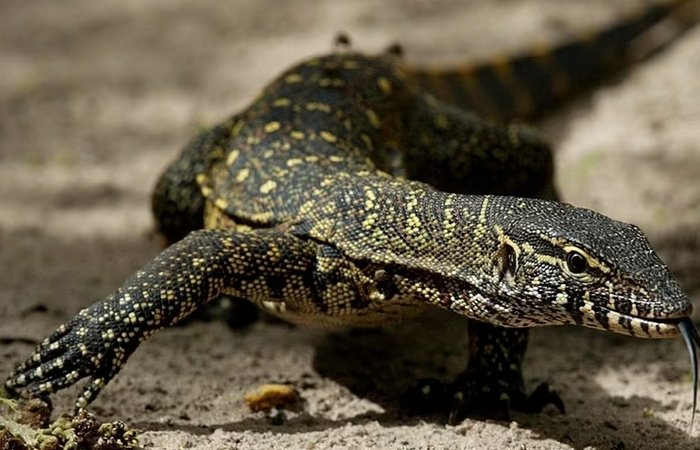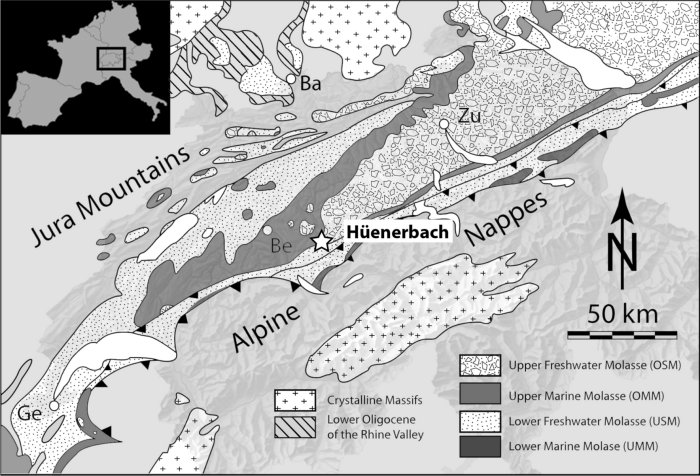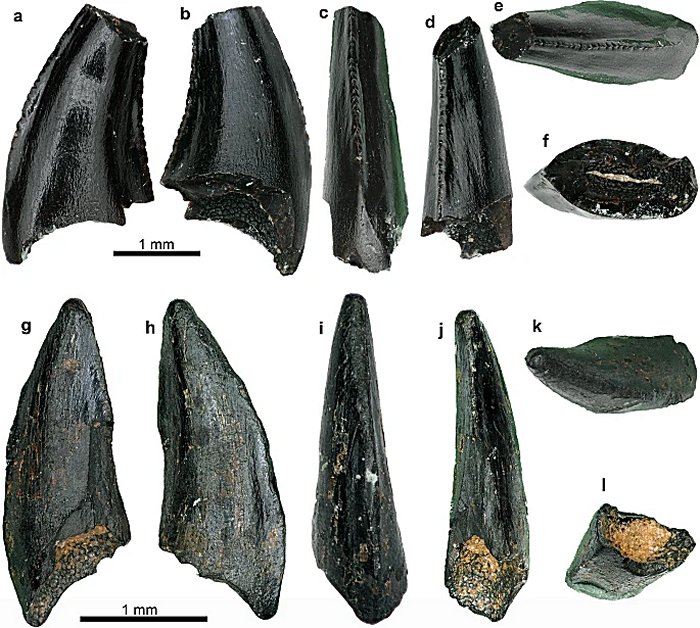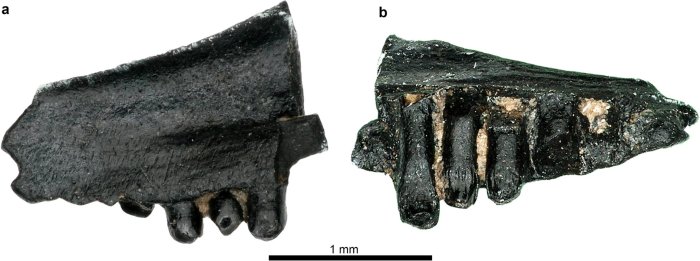Conny Waters – AncientPages.com – Basel researcher stumbles across first real proof of monitor lizards in Switzerland, and this unexpected discovery was made in the Museum’s collection storeroom.
Two teeth of a large lizard caught the eye of paleontologist Bastien Mennecart while he was working on the collection of fossil vertebrates at the Natural History Museum Basel.

A Nile monitor lizard, which can grow to up to two metres, searches for food in the Gambia Keystone / Nic Bothma – image ; source: Naturhistorisches Museum Basel, Switzerland
The fossils come from Langnau, located in the canton of Bern.
The distinctive serrations on the teeth and their center match the typical features of monitor lizards.
It is the first proof that monitor lizards lived in Switzerland 17 million years ago.
The findings surrounding the discovery were published yesterday in the prestigious scientific journal: Swiss Journal of Geoscience. Palaeontologist Bastien Mennecart discovered two remarkable, incomplete teeth during his scientific work amidst hundreds of small fossilized bones and teeth in the vertebrate paleontology collection of the Natural History Museum Basel.
He found out they belonged to a large lizard. The discovery was more precisely described in collaboration with an international team of three researchers and scientists from Poland, Germany, and Switzerland.

Location map of Hüenerbach by the city of Langnau im Emmental (Canton of Bern, Switzerland). The Swiss molᴀsse Basin Tertiary Formations are marked highlighting the fact that the Hüenerbach locality is at the transition between the OMM and OSM. Ba. Basel, Be. Bern, Ge. Geneva, Zu. Zurich (modified after Mennecart, 2012) – source –Swiss Journal of Geosciences – https://sjg.springeropen.com/articles/10.1186/s00015-023-00440-5
The research group concluded the teeth represent the first evidence to confirm that monitor lizards lived in Switzerland 17 million years ago. At that time, the climate in Switzerland was 5 to 10° degrees warmer than it is today.
Even though there is already a record of fossils for that period, no proof had ever surfaced of monitor lizards being native to Switzerland until now.
The fossilized teeth form one of the oldest evidence of the well-known giant lizard Varanus from Europe. Europe’s last known monitor lizards lived in Greece until around one million years ago. Palaeontologist provides the first proof.
The recently discovered fossils originate from Hüenerbach, a river not far from Langnau in Emmental, a district in the Swiss canton of Bern. Scientists working with Mennecart noted that one of the specimens has distinctive serrations resembling a knife.

?Varanus sp. from Hüenerbach. a–f tooth NMB Hüe.1 in lingual (a), labial (b), mesial (c), distal (d), occlusal (e), and ventral (f) views; g–l) tooth NMB Hüe.2 in lingual (g), labial (h), proximal (i), distal (j), occlusal (k), and ventral (l) views. source -Swiss Journal of Geosciences – https://sjg.springeropen.com/articles/10.1186/s00015-023-00440-5
At the same time, the characteristic morphology of the tooth’s ‘pulp,’ found in the hollow center of the tooth, demonstrates features typically found in the dentition of today’s monitor lizards.
Georgios Georgalis, a paleontologist at the Institute of Systematics and Evolution of the Polish Academy of Sciences in Krakow, believes small fossil remains are crucial.
“They help us understand the origins, bio-geographical history, and extinction of groups of reptiles now considered exotic, which once inhabited the European continent.”

Lacertidae indet. from Hüenerbach. Posterior portion of right maxilla NMB Hüe.3 in labial (a) and ventrolingual (b) views. source -Swiss Journal of Geosciences – https://sjg.springeropen.com/articles/10.1186/s00015-023-00440-5
Bastien Mennecart is fully aware of the importance of the paleontology collection of fossil vertebrates at the Natural History Museum Basel. It is one of the largest collections of its kind in 2 | 2 Europe and is well-known in scientific circles worldwide.
“The paleontology collection is a treasure trove,” says Mennecart. “We are working hard to properly prepare the collections for our move to the new museum. Who knows what other surprises we’ll find.”
Largest land lizards in the world The Komodo Dragon is among the largest living land lizards in the world today. It can grow up to three meters in length. One of its ancestors, the well-known Megalania, grew seven meters long.
This species, native to Australia, died out around 45,000 years ago. About 85 different species of monitor lizards are currently recognized. They are widespread and can be found in different habitats in Africa, Asia, and Australia.
The oldest known species of monitor lizard dates back to the early Miocene, around 18 million years ago. They lived in Afro-Eurasia and Australia. Only a few monitor lizard fossil sites have been identified so far in Europe. To date, fossil remains of monitor lizards have been discovered in the Czech Republic, France, and Spain.
Publications: Georgalis G., Mennecart B., & Smith K. (2023) First fossil record of Varanus (Reptilia, Squamata) from Switzerland and the earliest occurrences of the genus in Europe. Swiss Journal of Geosciences
Paper
Written by Conny Waters – AncientPages.com Staff Writer





